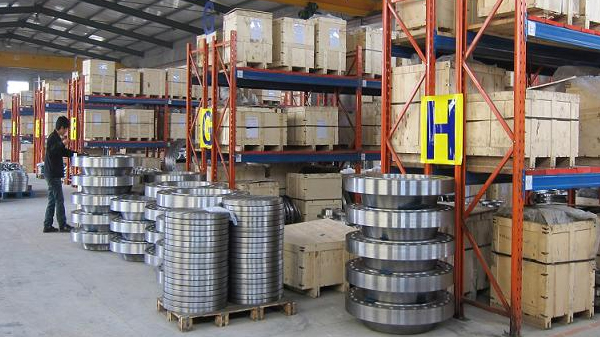In the realm of equipment, steel flanges are one of the most useful steel innovations. Despite the fact that they are simply a connecting material, their design has a significant impact on how the machine works. Flanges are forged or cast metal rings that link sections of pipes or unites the pipe to a pressure valve or other piece of equipment. For the smooth motion they offer, they are also utilized in sporting equipment (such as skis) and railway wheels and rails.
Flanges are considered internal components that make machine maintenance a breeze. The material they are built of determines their structural integrity, which is determined by how the machine will be utilized. Carbon steel, alloy steel, stainless steel, and steel heavy with titanium and nickel alloys are the most frequent materials used.
Flanges have a number of advantages, including the ability to quickly assemble and disassemble various elements of a machine. This is important not just for maintenance, but also for the machine’s principal duties’ flexibility.
Common Flange Types and Characteristics
Flanges aren’t a one-size-fits-all kind of thing. Aside from sizing, choosing the right flange design for your pipe system and intended use will ensure dependable operation, a long service life, and the best price.
Here’s a rundown of the most popular flange kinds.
Threaded Flanges
Threaded Flanges are also known as a screwed flange, has a thread within the flange bore that matches the male thread on the pipe or fitting. In many situations, the threaded connection eliminates the need for welding. Simply thread the threading onto the pipes you want to join.
Socket Weld Flanges
Socket-weld flanges have a connection in which you insert the pipe into the flange and then seal the connection with a single multi-pass fillet weld. They’re ideal for smaller pipe sizes in low-temperature and low-pressure circumstances. This makes this form of welded flange easier to install than other welded flange types while eliminating the drawbacks of threaded ends.
Slip-On Flanges
Slip-on flanges are popular and come in a variety of sizes to suit systems with increased flow rates and throughput. Simply fit the flange’s outer diameter to the pipe’s outer diameter. Because you’ll need to fillet weld both sides of the flange to attach it to the pipe, installation is a little more complicated.
Lap Joint Flanges
Lap joint flanges have a two-piece construction that requires butt welding the stub end to the pipe or fitting and then using a backing flange to complete the flanged connection. This type is ideal for usage in systems with limited physical area or systems that require regular disassembly and repair due to its architecture.
Alloy Flanges
Different steel alloys are used to make alloy steel flanges. The size and types of flanges vary. Alloy flanges exporters provide all types of flanges they are available in nominal diameter diameters ranging from 12 inches to 48 inches. As well as various sorts of alloys, Navstar Steel is a prominent manufacturer of ASTM A182 Low Alloy Steel flanges. Flanges for high-pressure applications are specified by ASTM A 182.
Copper Nickel Flanges
Due to its strong resistance to marine organisms such as barnacles, copper-nickel flanges are utilized in seawater pipe systems. It is helpful for forming a pipeline system by connecting pipes, pumps, valves, and other equipment.
Inconel flanges
These Inconel 625 Ring Type Joint Flanges are utilized in chemical process equipment that handles oxidizing and reducing mixed acids. Inconel Flanges can withstand a variety of harsh conditions and is particularly resistant to pitting and crevice corrosion. Inconel Flanges suppliers are usually able to provide you with all types of Inconel flanges.
Steel flanges come in a variety of shapes and sizes, and the purpose is determined by the kind. Consider the following example:
- Threaded flanges use a screw-on mechanism, with threading on the inside that must be secured to a pipe of the same size. In most situations, it aids in the avoidance of welding.
- Socket Weld flanges are ideal for small pipe diameters and low-temperature, low-pressure applications and are extremely simple to install
- One of the most popular types is slip-on flanges. They come in a variety of sizes and fittings, making them versatile enough to be used in a variety of machines. Although welding is required for installation, selecting the appropriate size and installing it is a simple process.
- Flanges for lap joints are made up of two pieces. They require butt welding to be joined, but they are ideal for use in cramped areas. They are also incredibly simple to deconstruct because they are made up of several pieces.
- Butt welding is also required when installing weld neck flanges. They are favoured in systems involving high pressure or high-temperature operations because of their great integrity.
- Pipe portions are isolated using blind flanges. They are blank disks that are fastened into position to halt the flow and, when fitted correctly, function as a seal.
If you have any queries, Prashaant Steel & Alloys is here to assist. We are familiar with the intricacies of alloy pipes as well as the demands of your business. For more information or to discover the right flange, pipe, and components for your next project, give us a call today.


Recent Comments